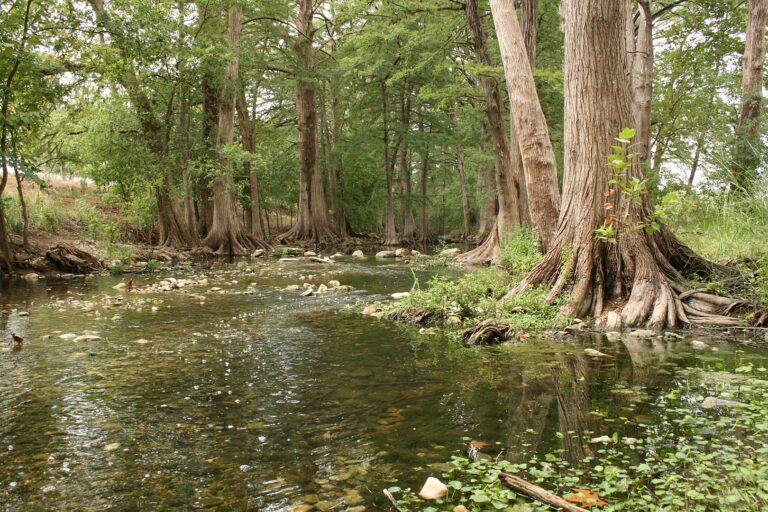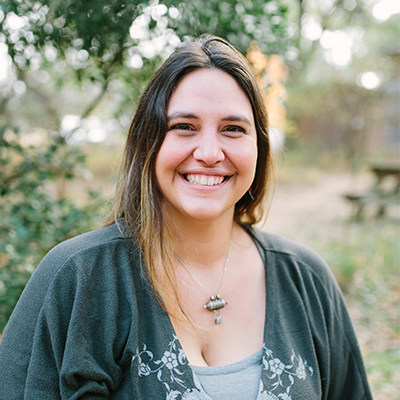
As the state of Texas experiences developmental shifts in infrastructure and populace, the local environment takes on new realities. The Cibolo Center for Conservation, located in Boerne, TX, promotes the conservation of natural resources by using science to inform decision-makers about practices and policies that affect the quality of life in the region. ESAL had the opportunity to interview Laurie Brown, the director of programs, and Ben Eldredge, the director of conservation, to learn about their mission and unique approach to community citizen science.
MS: How did you become involved in natural resource conservation?
Brown: My pathway was unusual. I actually started my science career as a veterinary technician and then went to work at an analytical chemical plant facility. Eventually, I got recruited by the San Antonio Zoo to teach and work on their volunteer program. So then I got into conservation, which has always been a passion of mine.
Eldredge: My family had a ranch in the region and my grandmother was the one who really took us out to explore for fossils and to notice all the subtleties of the natural environment. When I went to college, I naturally migrated to an environmental science degree. My grandfather called me up one morning and he asked if I wanted to come manage the ranch. It was great to apply ecology and to understand how you take what you know about natural systems and then emulate them through your land stewardship practices.
MS: What is Cibolo’s mission?
Eldredge: The mission is the conservation of natural resources through stewardship and education, stewardship for which community science feeds into. We use the data that we collect to inform our management. We're trying to understand how our management efforts and regional development impacts the wildlife in our park, as well as throughout some portions of the watershed. We're very dynamic, innovative, and both nature-oriented and sustainable-living-oriented. We really want to make an impact.

Laurie Brown. Photo Credit: Cibolo Center for Conservation
MS: How does Cibolo locally engage both scientists and nonscientists?
Eldredge: I see the nature center as a crossroads of community that includes community leadership scientists, University of Texas San Antonio, UT Austin, San Antonio River Authority, the US Geological Survey, and other organizations. Our community science program has opportunities for middle-school-aged students all the way up through seniors. Some are relatively easy to engage in, like the ant surveying, and some more complex like the plant surveys. We're also trying to bring people into the scientific community in ways that are not only meaningful and great experiences, but also based on legitimate scientific methodologies.
Brown: We've developed a huge relationship with the Monarch Joint Venture with Dr. Karen Oberhauser at the University of Michigan, University of Wisconsin, and University of Kansas. We are working with the University of Georgia on a citizen science project called OE testing on monarch, queen, and soldier butterflies. It's a super awesome engaging way to get our community into science.
We also do it by inviting science teachers. We trained a little over 160 teachers this year on how to do OE testing, and how to report their birds to Cornell. We're working with Bat Conservation International and sending them bat results of what we're finding on our night hikes. We found out that people really enjoy that connection. In all of our programs, we try to initiate some form of scientific discovery with an impact.
MS: What is an example of the way the conservation initiatives built by Cibolo have impacted local communities?
Eldredge: One that comes to mind: we were concerned about increased stream setbacks to buffer our stream ways and preserve our riparian zones. We'd already been chipping away at low impact development requirements. That ordinance was starting to be shaped up, so we decided to go ahead and make a really big push for stream setbacks. We talked about the Texas Hill Country being a flash flood alley. We also grabbed economic data from a major flood event that happened in Wimberley, Texas. We leverage that data to make the case that you'd be remiss not to increase these stream setbacks just for human safety and economics alone. That was the fastest pitch we ever made and got results.
Brown: We have also done some local guerrilla marketing with the mayor's monarch pledge through the National Wildlife Federation. That now has 30 conservation action items that a city has to produce to be a Monarch Champion City. So looking at how San Antonio has now embraced this, what we call a flagship species, has been really impressive. The great thing about flagship species is that if you conserve their environment you conserve the ecosystem as a whole.
MS: What are some long-term goals for Cibolo?
Brown: One of our major goals is to integrate a multilevel experience for every age group that comes to the Cibolo for programming. When you go on a field trip, you go to a place once – it's beautiful, it's great. We want to make it so visitors are inspired to make some positive impact. We're looking at going into a school and building them a pollinator garden, teaching them how to do community science there, and enrolling them in a community science effort.
I think a big piece for our goal is sustainability and looking at how we can be environmentally sustainable with our programming and incredibly low impact.

Ben Eldredge. Photo Credit: Cibolo Center for Conservation
MS: What are some challenges that Cibolo has faced?
Brown: One is that there's not enough of us. Our staff and our volunteer teams are incredibly multi-talented in different ways. We're jacks of all trades, but also masters of many. So it's a challenge because you have to focus and have a discerning eye.
Environmentally, it’s land development. There's a lot of bad structural change that can really destroy a lot of what we have. We have this working relationship with other organizations like the Cibolo Conservancy and Nature Conservancy, trying to encourage people with ranch land and larger acreage to do something different.
Eldredge: I can make a lot of changes at the local level, city, county, but the problem is that the state is really in the pocket of, basically, seven major industries. They are increasingly eroding what we call local controls, which are the ability of a local government to define what it wants for its future. We are seeing that our ability to protect our community and our natural environment is both insufficient and increasingly diminished.
Brown: Another unique problem that we're having is there's a distrust in science, in engineering, and all of these things. So you kind of have to be what I call a closet scientist.
MS: What advice do you have for scientists and engineers who want to get involved?
Brown: One of the things that I've had a lot of success in is bringing in engineers as early interns and training them in a way of giving them some exposure. Giving them an environmental focus can kind of change their view on how they articulate their work. The environmental conservation world needs more scientists and needs more engineers more than anybody can even imagine. I think that it's going to be a growing field in the years to come with the environmental damage that's being done. So we're all going to need help.
Eldredge: We need holistic engineering that includes the natural environment as a very fundamental concern to solve for. We need some of these engineers to see themselves as environmental change makers. People can make a positive change, and we need them to step up and make that change.
Are you involved with an organization or effort that you think might be of interest to the ESAL community? Or have heard about an organization or initiative that you’d like to learn more about? Let us know here, and we may feature it in a future post.